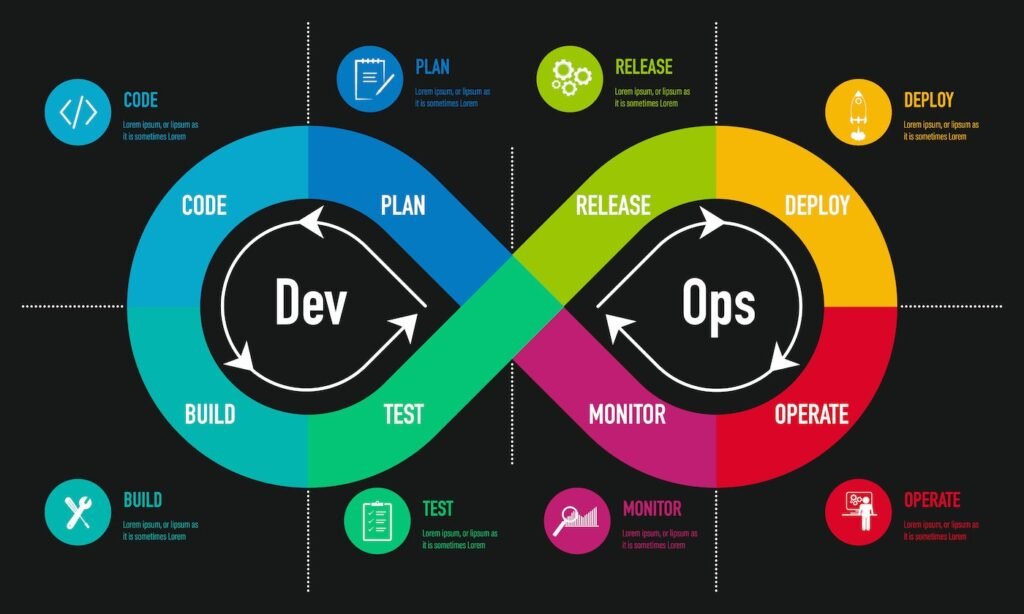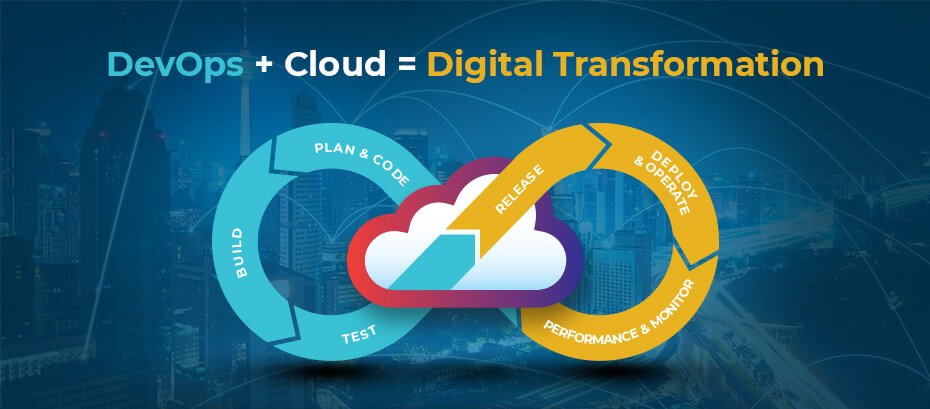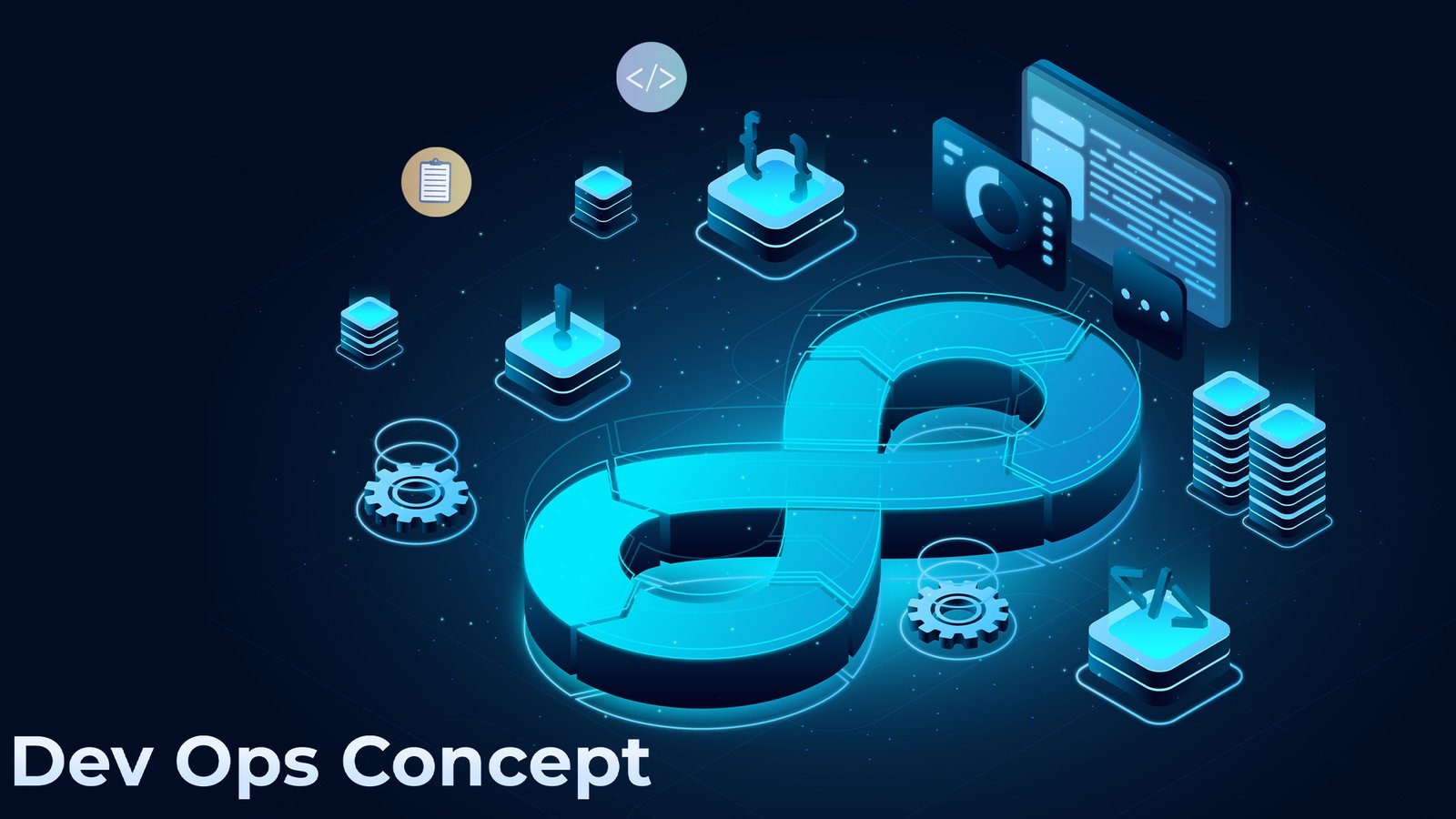Introduction
The product advancement industry is developing quickly, and organizations face expanding strain to convey top notch programming at speed. Enter DevOps — a game-changing methodology that overcomes any barrier among improvement and tasks. By cultivating coordinated effort, computerizing processes, and further developing productivity, DevOps has changed the product improvement scene. This article plunges into how DevOps changes programming improvement, talking about its standards, advantages, difficulties, and execution techniques.
1. Understanding DevOps and Its Principles
DevOps isn’t simply a strategy yet a social change in programming improvement.

DevOps, another way to say “Advancement and Tasks,” underlines coordinated effort among engineers and IT activities groups. It smoothes out work processes, diminishes bottlenecks, and conveys programming quicker while keeping up with elevated requirements of value.
Core Principles of DevOps
- Collaboration and Communication: Energizes consistent connections between groups.
- Automation: Works on tedious errands, like testing and organization.
- Continuous Integration/Continuous Deployment (CI/CD):Guarantees fast and proficient conveyance.
- Monitoring and Feedback: Gives continuous experiences to further develop execution and resolve issues.
| DevOps Principle | Key Benefit |
|---|---|
| Collaboration | Reduces silos, enhances teamwork. |
| Automation | Boosts efficiency, minimizes human errors. |
| Continuous Integration/Deployment | Accelerates delivery cycles. |
| Monitoring and Feedback | Ensures quality and operational excellence. |
2. Benefits of DevOps in Software Development
Embracing DevOps opens a scope of advantages that drive programming achievement.
By coordinating turn of events and activities, DevOps disposes of failures and speeds up the product lifecycle.

Key Benefits
- Quicker Time-to-Market: Robotization and CI/Cd pipelines permit groups to rapidly deliver refreshes.
- Worked on Quality: Nonstop testing guarantees mistakes are distinguished early.
- Upgraded Versatility: Cloud combination and containerization make scaling consistent.
- More noteworthy Consumer loyalty: Fast conveyance of elements upgrades client experience.
| Benefit | Description |
|---|---|
| Faster Time-to-Market | Quickens development cycles. |
| Improved Quality | Early error detection through continuous testing. |
| Enhanced Scalability | Leverages tools like Kubernetes for growth. |
| Customer Satisfaction | Responds promptly to user needs. |
3. DevOps Tools that Drive Transformation
The progress of DevOps intensely depends on the instruments that help its practices.
A strong DevOps biological system is fabricated utilizing instruments that work with CI/Compact disc, checking, mechanization, and variant control.
Popular DevOps Tools
- Jenkins: Computerizes CI/Disc pipelines, guaranteeing smooth combination and organization.
- Docker: Gives containerization to steady conditions across groups.
- Kubernetes: Organizes compartments for adaptability and unwavering quality.
- Git: Tracks changes and empowers cooperative rendition control.
| Tool | Function |
|---|---|
| Jenkins | Automates CI/CD pipelines. |
| Docker | Ensures consistent environments. |
| Kubernetes | Manages container orchestration. |
| Git | Tracks changes in code repositories. |
4. Challenges in Implementing DevOps
Notwithstanding its benefits, taking on DevOps presents huge difficulties.
Progressing to DevOps requires a change in mentality, preparing, and the right devices.
Common Challenges
- Social Obstruction: Groups acclimated with conventional strategies might oppose change.
- Instrument Over-burden: Picking the right apparatuses from a variety of choices can overpower.
- Ability Holes: Workers might expect preparing to utilize DevOps apparatuses successfully.
- Security Concerns: Computerizing cycles can present weaknesses in the event that not dealt with cautiously.
| Challenge | Impact |
|---|---|
| Cultural Resistance | Slows adoption and collaboration. |
| Tool Overload | Confuses teams with excessive tool choices. |
| Skill Gaps | Delays implementation and efficiency gains. |
| Security Concerns | Poses risks in automated environments. |
5. Steps to Implement DevOps in Your Organization
An organized methodology is vital to effectively embracing DevOps.
To receive DevOps’ rewards, associations should zero in on essential preparation, preparing, and execution.
Implementation Steps
- Evaluate Current Cycles: Distinguish shortcomings in your ongoing turn of events and activities rehearses.
- Pick the Right Devices: Select instruments that line up with your goals, like Jenkins, Docker, or Git.
- Begin Little: Pilot DevOps in a little group prior to scaling it association wide.
- Advance Joint effort: Support open correspondence among designers and IT groups.
- Screen Progress: Use criticism to streamline work processes and address difficulties.
6. Future Trends in DevOps
DevOps keeps on advancing, integrating arising advancements and systems.
Trends Shaping DevOps
- Artificial intelligence and ML Reconciliation: Upgrading computerization and prescient examination in CI/Disc pipelines.
- DevSecOps: Inserting security rehearses into DevOps work processes.
- Serverless Registering: Smoothing out foundation the executives for adaptability.
- Edge Registering: Growing DevOps practices to decentralized frameworks.
Comparison Table: Traditional Development vs. DevOps
| Aspect | Traditional Development | DevOps |
|---|---|---|
| Workflow | Linear, siloed processes. | Collaborative, integrated workflows. |
| Speed | Slow, with long release cycles. | Fast, due to automation and CI/CD. |
| Error Handling | Errors detected late in the cycle. | Continuous testing ensures early detection. |
| Scalability | Limited, manual scaling efforts. | Automated, highly scalable. |
Notes on DevOps’ Impact
- Group Cooperative energy: DevOps encourages coordinated effort, overcoming any issues among improvement and activities.
- Functional Greatness: Via mechanizing work processes, DevOps guarantees consistency and dependability.
- Future-Sealing: Remaining ahead in tech patterns like artificial intelligence and serverless design reinforces the significance of DevOps.
Conclusion
DevOps has changed the product improvement process, tending to the requirement for speed, quality, and cooperation in current business conditions. Via mechanizing work processes, separating storehouses, and focusing on ceaseless improvement, DevOps upgrades functional effectiveness and consumer loyalty.
While challenges exist, associations taking on DevOps stand to acquire an upper hand, opening development and deftness in a speedy computerized scene. With its capacity to adjust and develop close by innovative progressions, DevOps isn’t simply a strategy — it is the fate of programming improvement.

